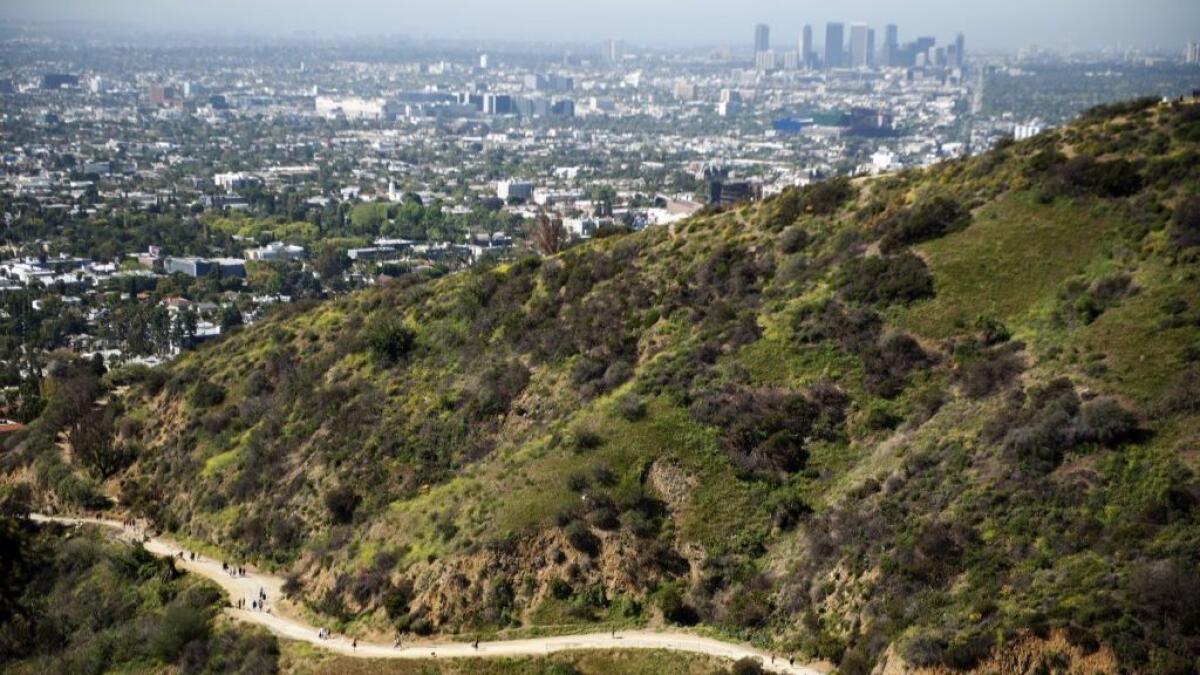Op-Ed: Don’t believe the naysayers. California isn’t too big, too depopulated or too ungovernable

- Share via
It’s the meme that won’t die: California as rotting husk.
Rich businessman Tim Draper employed it to back his Cal 3 ballot measure, now disqualified. He collected hundreds of thousands of signatures from people who apparently bought the idea that California is in such dreadful shape it should be abolished, replaced by three new, smaller states. Draper’s alarmism knows no bounds. He once said that the alternative to his proposal was to “let the state flop around and die or wait until there’s some sort of violent revolution.”
But California as the “first failed state,” which was a topic of national debate as the Great Recession ebbed, is nothing more than a durable myth. Our famously sunny skies are not falling.
The Measure of America, a national “human development index” developed by the Social Science Research Council, combines data on life expectancy, income and educational attainment into a single score. (You can quibble with some parts of its methodology, but the basic criteria are sound — nobody hopes their children die young amid poverty and ignorance.)
Measure of America researchers have found that California consistently outscores most other states, and the state’s “development index” ranking was higher in 2014, the last time they produced a full report on California, than it was in 2000. The numbers reveal stark inequalities within the state — the San Jose area outperforms rich Connecticut while Bakersfield scores worse than poor Mississippi — but overall, the metrics suggest that life in California is better than in most of the country, and better than it was here 20 years ago.
Life in California is better than in most of the country, and better than it was here 20 years ago.
Doomsayers like Draper often pick on the state’s size — a sort of geographic fat-shaming — and say that California is too big to function. In fact, economies of scale mean that we have a relatively lean state government, with fewer state employees as a share of population than most states. Being big also helps in addressing regional inequalities because rich parts of the state provide tax dollars to fund public services in the poor parts. Silicon Valley helps the Central Valley.
It’s tiny states that don’t make much sense, not big ones. Start off with a blank map of North America and brainstorm a new system of optimal regional governments. You’ll never come up with Rhode Island, but you might create California.
Or consider the state’s public policy successes. When California’s financial crisis was at its worst, alarmists repeated the silly claim that California was “ungovernable.” It was a pamphleteer’s slogan fobbed off as a thinker’s analysis. Even in hard times, the state’s policymaking process, goosed by ballot propositions in some cases, was getting things done.
In the last 15 years, we have become a global leader in seeking to reduce carbon emissions, arguably the most important long-term issue facing humanity. We have enacted humane and economically sensible measures to provide public services for undocumented immigrants. The annual state budget deficits and delays that were once Exhibit A for California dysfunction have been transformed into surpluses, thanks in part to a better economy but also because of public policy decisions such as a tax increase focused on the wealthy and a revised budgetary process in the Legislature.
Obviously Californians may disagree with specific policies, but it’s nonsense to claim that the state can’t tackle big issues.
Enter the Fray: First takes on the news of the minute from L.A. Times Opinion »
Finally, Chicken Littles like to note that more people are now leaving for other states than arriving from them. Then they stretch the truth to say that the state is depopulating, conjuring future visions of an empty land. But that claim ignores our attractiveness to foreign rather than state-to-state immigrants. California has about a quarter of the country’s foreign immigrant population, and although this kind of in-migration is slowing, the fact remains that California will have more people in the future, not fewer.
Some California critics even argue that rich people and businesses are fleeing the state in droves, but that’s false. One recent study of “millionaire tax flight” agreed with earlier research when it concluded that “the most striking finding ... is how little elites seem willing to move to exploit tax advantages across state lines.” The same thing is true of businesses. In 2015 researchers found that more businesses move into the state than move out, which also echoed previous studies.
The Golden State has its problems, some of which are California-sized. The obscenely high cost of housing, for example, is far worse here than in other states, and it cries out for a statewide policy solution that has yet to be successfully articulated or passed into law. Others, such as excessive and increasing economic inequality, are more rooted in national trends.
But acknowledging our challenges hardly means that the state should be given up for dead, or cut into pieces. Perhaps if people better understood that California is not falling apart, they would be less inclined to want to rip it apart.
Ethan Rarick is the author of “California Rising: The Life and Times of Pat Brown.” He is the director of the Robert T. Matsui Center for Politics and Public Service at UC Berkeley.
Follow the Opinion section on Twitter @latimesopinion and Facebook
More to Read
A cure for the common opinion
Get thought-provoking perspectives with our weekly newsletter.
You may occasionally receive promotional content from the Los Angeles Times.






